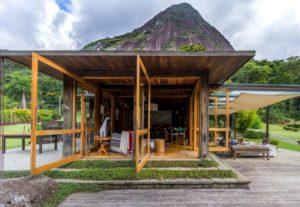Andrew Webb, Principal at WD Architects
Post Contents
Apart from it being somewhere you like and can afford, here are some things that affect construction costs and design opportunities:
Soil stability and classification
Poor soil means that your footings and foundations will be large, deep and expensive before the building is even out of the ground. It is a good idea to commission a soil test before committing to buy land. Cheap land may mean expensive build cost.
Gradients
Flat land is generally cheaper to build on than slopes, but may not offer views nor good solar access, so the pros and cons need to be weighed up.
Bushfire zoning
Generally land that is connected to large expanses of bushland will have high bushfire ratings and therefore require provisions such as bushfire screens, laminated or toughened glass, limits on external materials, etc. Also note that fire burns uphill. Check with the local council for a guide to the bushfire zoning. The ultimate bushfire rating is usually determined by a building certifier or specialist consultant.
Easements
These are parts of the land that are reserved for others’ right of access for such things as sewer lines, power lines, neighbours’ access. You cannot usually build within easements so, particularly on odd-shaped blocks, they can make your building area much smaller than you might first think, limiting your options. Easements aren’t necessarily a negative as it depends on the particulars.
Orientation
Passive solar design (using the natural variations of the sun’s angle over the year to best advantage) is easiest and least expensive to achieve with northern to north-eastern orientation in the Southern Hemisphere. This means that blocks that face to the north to north-east will be less expensive to build to a high standard of energy-efficiency than a block facing another direction.
West is the worst direction for large expanses of glass, as the afternoon sun is low in the west all year and hot in summer in most climates.
It is possible to create energy-efficient buildings at virtually any orientation, but it is typically more expensive to do so the closer to west, east and south (in that order) that the block faces.
In terms of build cost, if northern orientation is not possible then southern orientation is next best as the roof can relatively easily be shaped to catch the north light for winter anyway (depending on particulars, of course). It is hard, but not impossible, to keep out low-angle hot western and eastern sun if you also want a view in those directions.
Shading
What are the neighbours like? Tall trees, tall buildings, and tall hills can shade the block excessively when you don’t want it shaded, such as winter mornings. Excessive uncontrollable shading can mean high heating costs, high lighting costs, mould problems and limit the effectiveness of solar panels or solar hot water systems.






